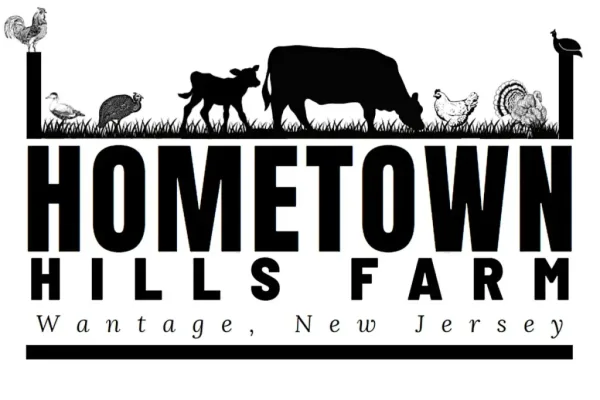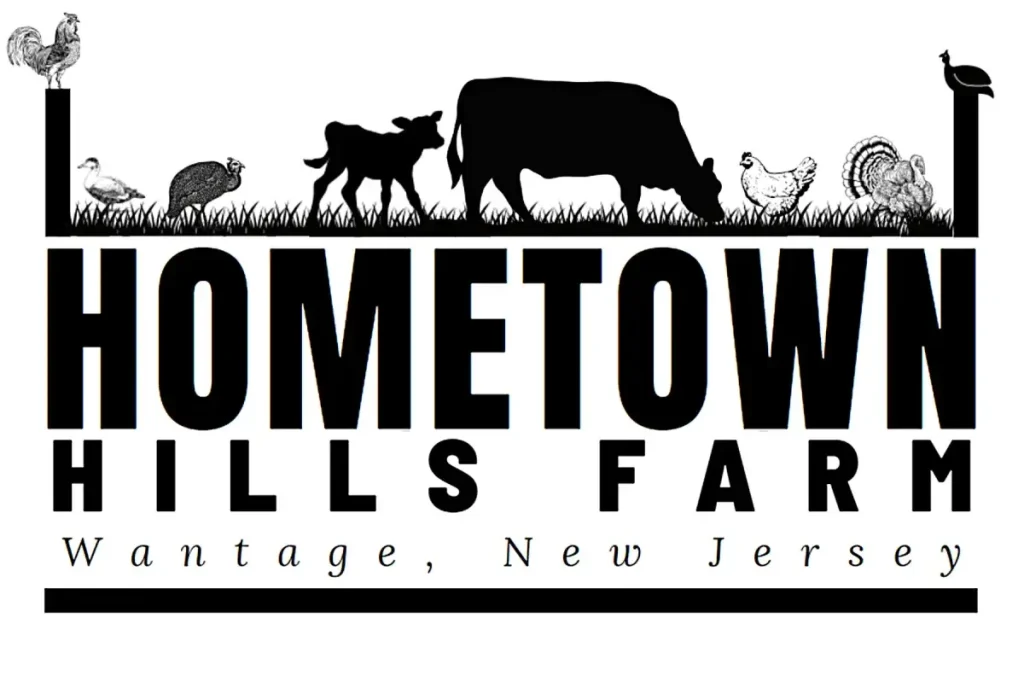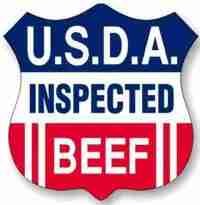Introduction to Grass-Fed Beef
Grass-fed beef refers to meat sourced from cattle that have been raised primarily on a diet of grass and forage, as opposed to conventional grain-fed beef, where cattle are typically supplemented with grains such as corn and soy. This fundamental difference in diet significantly impacts not only the nutritional profile of the meat but also the methods of raising the animals. Whereas grain-fed beef is often produced in large-scale feedlots, grass-fed beef is typically associated with more sustainable and humane farming practices, allowing cattle to roam freely in pasture settings.
In recent years, the interest in grass-fed beef has surged, driven by growing consumer awareness about health, sustainability, and animal welfare. Many individuals are increasingly concerned about the quality of the food they consume. Grass-fed beef is often touted as being healthier than its grain-fed counterpart, containing higher levels of beneficial omega-3 fatty acids and antioxidants, as well as having a lower overall fat content. This has led health-conscious consumers to seek out grass-fed options as part of a balanced diet.
The environmental implications of beef production have also come to the forefront. Grass-fed cattle can play a role in regenerative agriculture, which aims to restore soil health and reduce carbon footprints. Many consumers view the support of grass-fed beef as a positive choice for both personal health and the environment, further contributing to its rising popularity.
Overall, the growing interest in grass-fed beef is indicative of a broader trend toward healthier eating, sustainable food systems, and a more ethical approach to animal farming. As awareness of these issues continues to expand, it is likely that the demand for grass-fed beef will remain strong, influencing more consumers to make conscious choices about the source and quality of their meat.
Health Benefits of Grass-Fed Beef
Grass-fed beef has garnered significant attention in recent years, mainly due to its numerous health benefits compared to conventional grain-fed beef. One of the most notable advantages is its higher concentration of omega-3 fatty acids. Research indicates that grass-fed beef can contain up to five times more omega-3s than its grain-fed counterpart. These essential fatty acids are crucial for cardiovascular health, reducing inflammation, and supporting brain function.
Another key benefit of grass-fed beef is its superior vitamin profile. It is rich in antioxidant vitamins, particularly Vitamin E, which plays an essential role in protecting cells from oxidative damage. Additionally, grass-fed beef often contains higher levels of other vitamins, including Vitamin A and various B vitamins, which contribute significantly to overall well-being. Some studies suggest that these vitamins can enhance immune function and improve skin health, further solidifying the argument for choosing grass-fed options.
The fat content in grass-fed beef is also noteworthy; it is generally lower than that found in grain-fed beef. This reduction in fat content, combined with a healthier fat profile rich in beneficial fatty acids, results in a product that is more aligned with a health-conscious diet. Furthermore, consumers often favor grass-fed beef for its naturally occurring conjugated linoleic acid (CLA), a type of fat that has been linked to various health benefits, including potential weight management and anti-cancer properties.
Several scientific studies and expert opinions have validated these health benefits of grass-fed beef. Nutritionists and dietitians frequently recommend this option for individuals seeking healthier meat alternatives. As consumers become more educated about their food choices, the demand for grass-fed beef continues to rise, supported by a growing body of evidence pointing to its numerous health advantages.
Environmental Impact of Grass-Fed Cattle Farming
Grass-fed cattle farming has gained significant attention for its potential environmental benefits, primarily through improved land management practices. Unlike conventional beef production, which often relies on intensive grain feeding and confinement, grass-fed systems utilize pasturelands to raise cattle. This method promotes better soil health and increases biodiversity by allowing native grasses and plants to thrive. As herds graze, they naturally stimulate the soil, aiding in carbon sequestration and reducing greenhouse gas emissions over time.
Another noteworthy aspect of grass-fed beef production is its positive impact on animal welfare. Cattle reared on pasture typically exhibit more natural behaviors, which contributes not only to their overall health but also to the ethical standards of farming. Animals provided with ample space, fresh air, and a diet consisting primarily of grass often live healthier lives, thereby reducing the stress that confinement can impose. Such practices align closely with the growing consumer awareness surrounding ethical farming, further driving the demand for grass-fed products.
Despite these benefits, grass-fed beef production is not without its challenges and criticisms. Skeptics highlight potential inefficiencies in land use since grass-fed systems may require more land compared to conventional feedlot operations. Additionally, some argue that the slow growth rate of grass-fed cattle can lead to increased methane emissions per product unit, necessitating rigorous management practices to mitigate such issues. It is vital for producers to continuously evaluate and improve upon their sustainability practices to ensure that grass-fed livestock farming remains a viable and environmentally beneficial alternative in the overarching context of food production.
Ethical Considerations in Grass-Fed Farming
The ethical considerations surrounding animal husbandry practices play a significant role in the rising trend of grass-fed beef consumption. A primary aspect of this discussion is the humane treatment of livestock. Grass-fed cattle are often raised in pasture-based systems, which allow them to engage in natural behaviors such as grazing and roaming. This contrasts with conventional feedlot systems, where animals are typically confined and often face stressful conditions. The ability for cattle to thrive in a more natural environment has led many consumers to prefer grass-fed beef as a more ethical choice.
Moreover, pasture-based systems promote a balanced ecosystem that benefits both the cattle and the environment. In these settings, cattle not only consume grass but also contribute to soil health through their grazing patterns. This regenerative aspect of grass-fed farming often aligns with the values of consumers seeking sustainable food sources. The ethical implications of how animal-derived products are produced have become increasingly important, with many consumers considering the welfare of the animals involved in their food choices.
Another important consideration is the transparency within the grass-fed beef supply chain. Consumers today are more informed and concerned about the origins of their food. They seek assurance that the cattle have been treated humanely and raised in organic, sustainable environments. As a result, many grass-fed beef producers face pressure to maintain high welfare standards and provide detailed information about their farming practices, addressing consumer concerns more effectively.
The trend towards ethical eating is not merely a fad; it signifies a shift in consumer values towards practices that prioritize animal welfare and environmental sustainability. This growing awareness and responsibility foster a positive feedback loop, encouraging consumers to choose products that align with their ethical beliefs, ultimately driving demand for grass-fed beef.
Culinary Advantages of Grass-Fed Beef
The culinary landscape is witnessing a remarkable shift with the rising popularity of grass-fed beef, celebrated for its distinct and nuanced flavor profiles. Unlike traditional grain-fed beef, which often presents a more uniform taste due to its diet, grass-fed beef boasts complex flavor notes influenced by the variety of grasses and forages consumed by the livestock. This results in a beef product that is not only more flavorful but also offers a richer and healthier alternative. Many enthusiasts describe the taste of grass-fed beef as earthier and slightly sweeter, providing a delightful contrast that can elevate numerous culinary dishes.
From a nutritional standpoint, grass-fed beef is hailed for its superior quality, being higher in omega-3 fatty acids and essential vitamins when contrasted with its grain-fed counterparts. This not only allows for a healthier meal option but also lends itself well to various cooking methods that can highlight its attributes. When preparing grass-fed beef, chefs and home cooks alike are encouraged to embrace techniques such as slow cooking or sous-vide to ensure the meat remains tender and juicy, as it is leaner than grain-fed counterparts. Marinating grass-fed cuts can also enhance tenderness and boost flavor, with acidic ingredients like citrus or vinegar performing particularly well.
Another aspect to consider is the choice of cuts; certain cuts of grass-fed beef, like ribeye and sirloin, can be especially rewarding when grilled or pan-seared. Utilizing a quick, high-heat cooking method allows the natural flavors to shine while achieving a perfect sear. Additionally, incorporating fresh herbs or simple seasoning can elevate the inherent taste without overpowering it. Ultimately, the culinary advantages of grass-fed beef lie in its ability to provide a unique taste experience that not only tantalizes the palate but also aligns with emerging health-conscious trends in sustainable cooking.
Grass-Fed Beef Cost and Accessibility
In recent years, grass-fed beef has gained popularity among consumers who prioritize health, animal welfare, and sustainable farming practices. However, this trend often raises questions regarding cost and accessibility compared to traditional grain-fed beef. Generally, grass-fed beef tends to be more expensive due to a range of factors that contribute to the higher price tag.
First and foremost, the production of grass-fed beef typically involves larger expenses for farmers. Grass-fed livestock require more time to reach market weight compared to their grain-fed counterparts. This extended lifespan results in increased costs related to land usage, animal husbandry, and feed. Additionally, the limited availability of pastureland in some regions may impose additional financial strains on farmers aiming to provide grass-fed options. These factors combine to create a price differential that consumers often notice at the point of sale.
Despite these challenges, the market for grass-fed beef is evolving, leading to improved accessibility for consumers. A growing number of farmers’ markets and local retailers are increasingly offering grass-fed options, recognizing the shift in consumer demand. This trend reflects a larger movement towards more sustainable food sources and enhances the visibility of local, small-scale producers who adhere to grass-fed practices.
Furthermore, the rise of online grocery delivery services has facilitated access to grass-fed beef. Many companies now offer subscriptions or direct sales from farmers, allowing consumers to purchase high-quality meats conveniently. As more ethical and health-conscious consumers seek grass-fed products, it is likely that competition will further drive prices down over time.
In conclusion, while grass-fed beef remains more expensive than traditional beef due to production costs and farming practices, improved accessibility through various retail channels is gradually making it more available to consumers who prioritize its benefits.
Consumer Trends and Awareness
In recent years, there has been a noticeable shift in consumer preferences towards sustainable and health-conscious food sources, particularly regarding meat products. The rise of grass-fed beef exemplifies this trend, as more individuals prioritize transparency in sourcing and the nutritional benefits associated with their dietary choices. According to a 2023 survey by the Food Marketing Institute, nearly 60% of consumers express a desire to know where their food comes from, a statistic that highlights the increasing importance of food sourcing in purchasing decisions.
Market data shows that the grass-fed beef segment is expanding significantly, with sales reaching an estimated $1.5 billion in the U.S. alone. This growth can be attributed to a heightened awareness of the detrimental effects of conventional farming practices on the environment and personal health. Consumers are drawn to the perception that grass-fed beef offers a healthier alternative, rich in omega-3 fatty acids and antioxidants, which are often absent in grain-fed counterparts. As health consciousness rises, more individuals are seeking out options that align with their values regarding nutrition and sustainability.
Expert insights have echoed this sentiment, indicating that consumer education plays a crucial role in driving the demand for grass-fed beef. Companies investing in transparent marketing practices and clear labeling have gained a competitive edge in attracting discerning consumers. Moreover, social media campaigns and influencer endorsements further amplify the message of choosing grass-fed products, reflecting a cultural shift where people take an active interest in their food’s origins.
This emerging awareness around food sourcing underscores a broader movement toward sustainable eating habits, reinforcing the notion that grass-fed beef is not just a trend, but potentially a fundamental shift in how consumers approach their dietary preferences.
Farming Practices and Innovations
The production of grass-fed beef is distinguished by various farming practices that emphasize sustainability and animal welfare. One of the primary methods utilized in this industry is rotational grazing, a technique that involves moving cattle between pasture sections. This approach not only optimizes land use but also enhances pasture health. By allowing grass to recover, rotational grazing helps maintain soil fertility and reduces the risk of overgrazing, which can lead to land degradation. The feasting pattern encourages diverse grass species, fostering biodiversity which is essential for the ecosystem’s balance.
In addition to rotational grazing, many grass-fed beef producers adopt organic farming practices, which refrain from using synthetic fertilizers and pesticides. This organic approach aligns with increasing consumer demand for naturally raised livestock, as it assures buyers that their meat comes from cattle raised in a manner that supports environmental sustainability and animal welfare. Moreover, organic practices help mitigate the ecological footprint of beef production, as they focus on enhancing soil health and reducing chemical runoff.
Innovations in the field have also emerged, paving the way for increased efficiency in grass-fed beef production. For instance, the integration of technology such as data analytics and precision ranching facilitates monitoring pasture conditions and animal health with greater accuracy. Farmers are now able to analyze various factors, including soil moisture and nutrient levels, allowing them to make informed decisions on grazing patterns and feed management. Additionally, advancements in breeding techniques are focused on developing cattle breeds that are more efficient at converting grass to meat, thus enhancing yield while aligning with sustainable practices.
With these farming practices and innovations, the grass-fed beef industry continues to evolve, appealing to both farmers looking for productive methods and consumers seeking health-conscious choices. The commitment to sustainability and animal welfare underscores the growing importance of these practices in meeting the needs of today’s market.
Conclusion: The Future of Grass-Fed Beef
As the demand for grass-fed beef continues to rise, it reflects a broader shift in consumer preferences toward sustainably produced food. This trend is not merely a fleeting phenomenon; it represents a fundamental change in how consumers view animal husbandry and its impact on health and the environment. The increasing awareness surrounding the nutritional benefits of grass-fed beef, such as higher omega-3 fatty acids and conjugated linoleic acid, drives many to seek out this option as a healthier alternative to conventional grain-fed beef.
Moreover, the environmental implications of grass-fed beef production present a compelling case for its growth. Grass-fed cattle are often associated with lower greenhouse gas emissions and enhanced biodiversity on ranch lands, appealing to the environmentally conscious consumer. As research continues to highlight these benefits, the potential for grass-fed beef to gain traction within mainstream markets becomes increasingly viable. Furthermore, policies supporting sustainable agricultural practices may further bolster the industry’s prospects, encouraging more ranchers to adopt grass-fed methods and expand their operations.
Consumer education will be pivotal in shaping the future landscape of grass-fed beef. Efforts to inform the public about the benefits of grass-fed products and the holistic practices involved in their production can foster a deeper understanding and appreciation. The role of organizations, media, and stakeholders within the food industry in disseminating accurate information is crucial. As consumers become more informed, their purchasing decisions will increasingly align with their values, reinforcing the trend toward grass-fed options.
In conclusion, the trajectory of grass-fed beef appears promising. With the fusion of consumer preference, environmental considerations, and policy support, grass-fed beef is positioned to become a staple in the diets of health-conscious individuals and families. The intertwining of education and advocacy will play a significant role in sustaining this rising trend, ensuring that grass-fed beef not only thrives but also contributes positively to the environment and public health.
Share This Story, Choose Your Platform!
Grass-Fed Beef & Pastured Pork
Order Online
Discover the difference of premium, locally sourced meat with our grass-fed beef shares. Sourced directly from our sustainable Wantage, New Jersey farm in Sussex County, our cattle are humanely raised on lush pastures. Each cut is carefully selected and expertly processed to deliver unmatched freshness and flavor. Taste the exceptional quality of our grass-fed beef, raised right here in our community.


